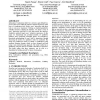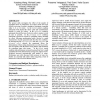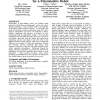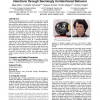261 search results - page 23 / 53 » Theory and Evaluation of Human Robot Interactions |
CHI
2008
ACM
14 years 8 months ago
2008
ACM
Information Visualization (InfoVis) is at least in part defined by a process that occurs within the subjective internal experience of the users of visualization tools. Hence, user...
HRI
2009
ACM
14 years 2 months ago
2009
ACM
The present study investigates the effect of the number of controlled robots on performance of an urban search and rescue (USAR) task using a realistic simulation. Participants co...
HRI
2006
ACM
14 years 1 months ago
2006
ACM
Polymorphic, or shape-shifting, robots can normally tackle more types of tasks than non-polymorphic robots due to their flexible morphology. Their versatility adds to the challeng...
MHCI
2009
Springer
14 years 2 months ago
2009
Springer
This paper discusses the concept of using head and facial feature tracking as an input mechanism for mobile devices. We present our concept and ideas, along with preliminary findi...
HRI
2009
ACM
14 years 14 days ago
2009
ACM
Human communication involves a number of nonverbal cues that are seemingly unintentional, unconscious, and automatic—both in their production and perception—and convey rich in...




